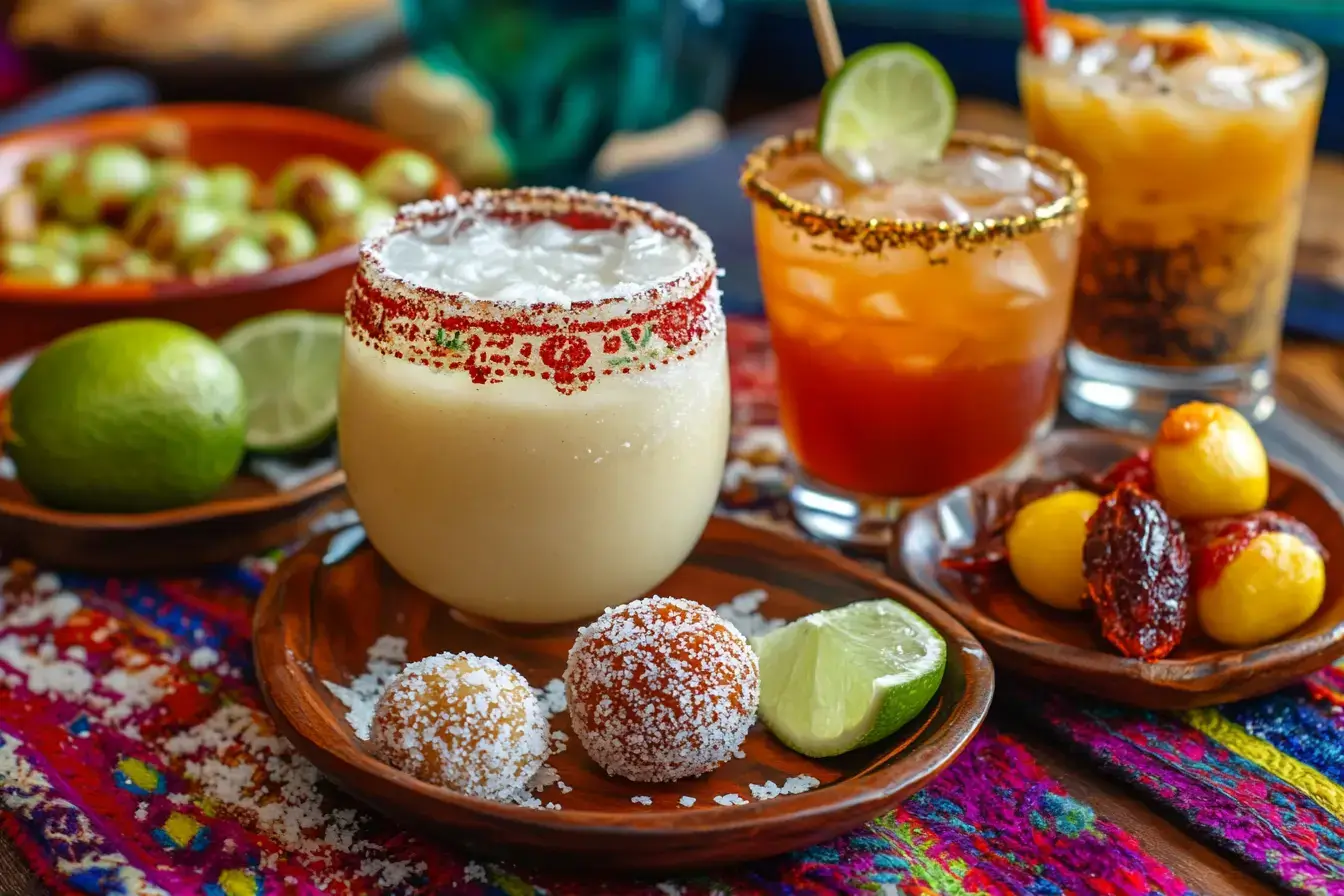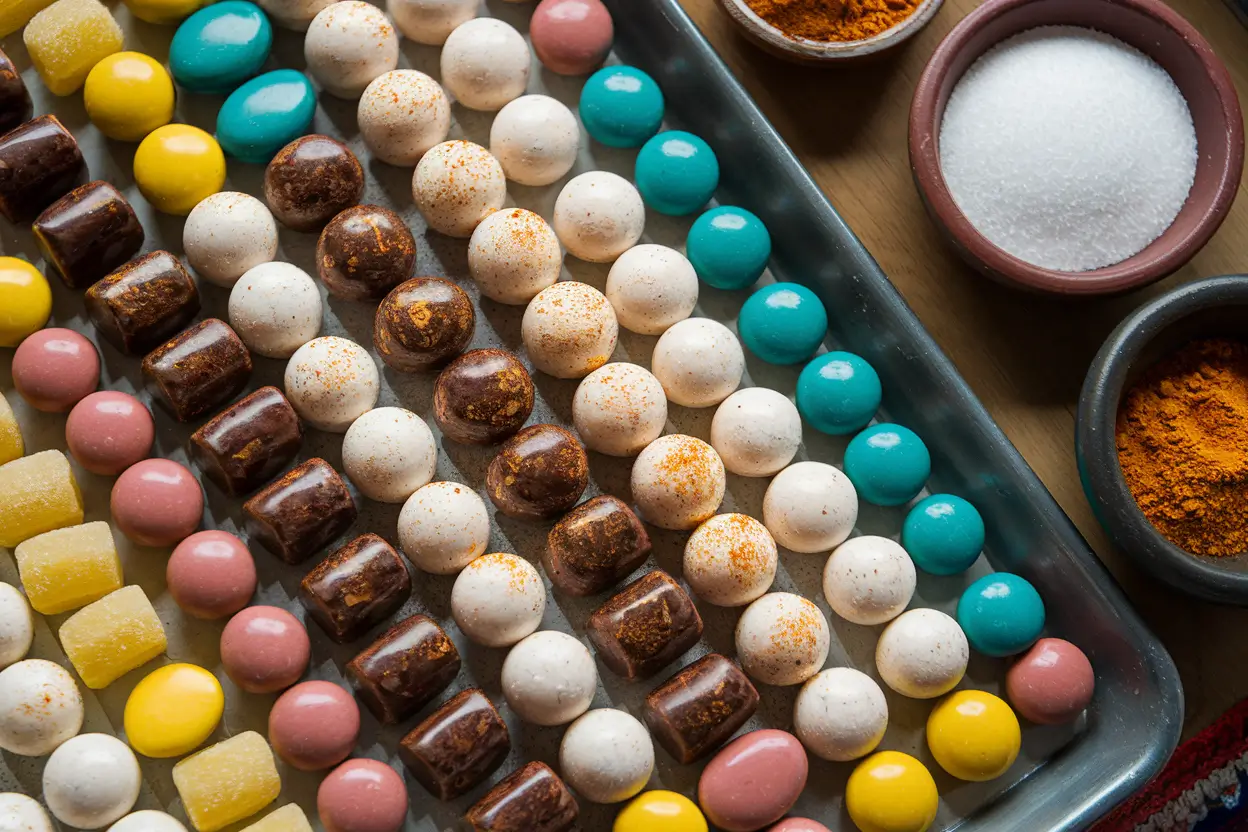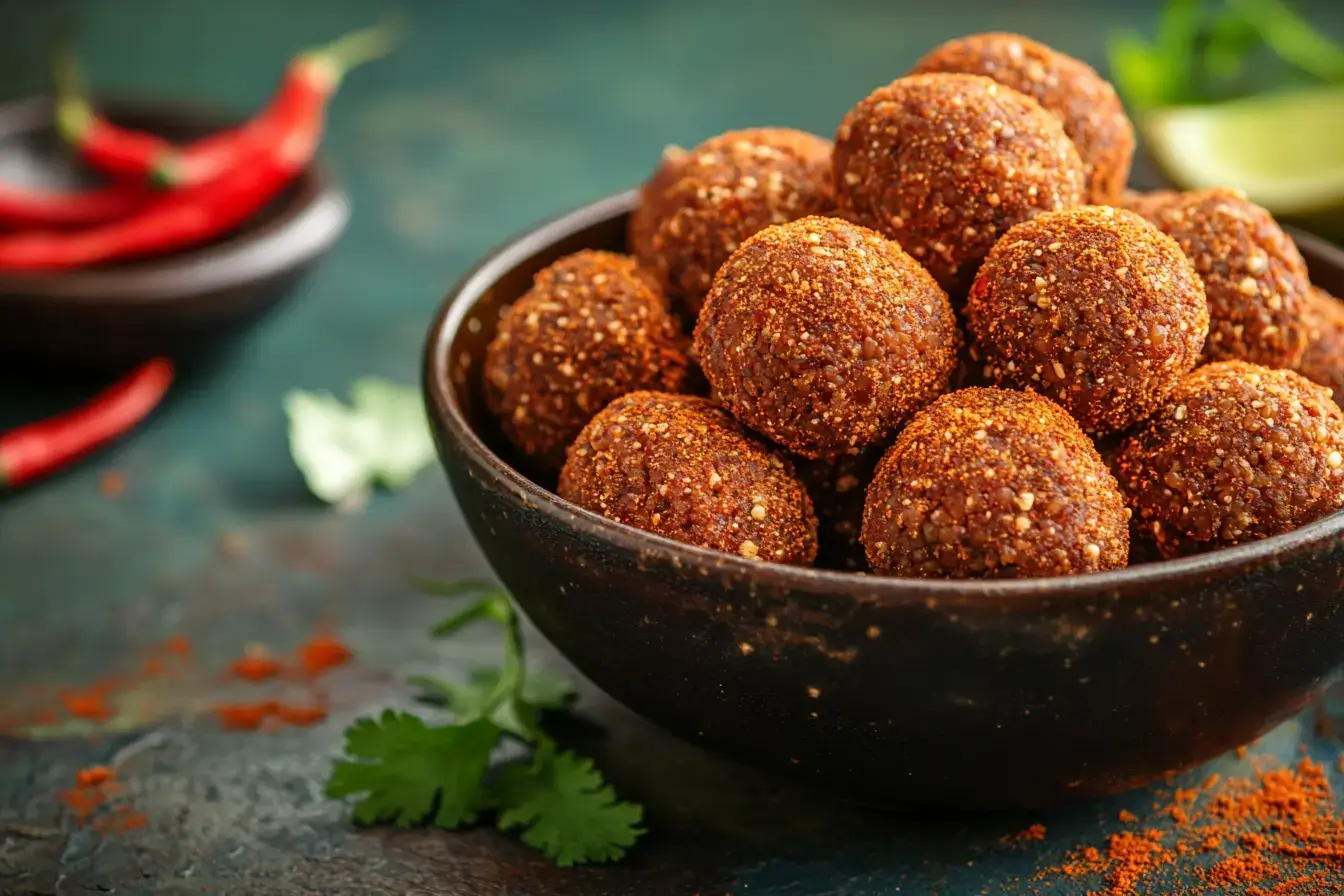 What is the most popular candy in Mexico? If you’ve ever wondered, you’re not alone. Mexican candy is a vibrant and flavorful part of the country’s culture, and it offers an exciting blend of sweet, spicy, and tangy flavors that you won’t find anywhere else. From tamarind-based treats to chili-covered lollipops, Mexican candy brings a unique twist to the world of sweets. In this guide, we’ll explore the top 5 must-try candies in Mexico, helping you discover which candies are the most beloved across the nation. Not only are these candies delicious, but they also provide an insight into the culinary traditions that have shaped Mexican culture.
What is the most popular candy in Mexico? If you’ve ever wondered, you’re not alone. Mexican candy is a vibrant and flavorful part of the country’s culture, and it offers an exciting blend of sweet, spicy, and tangy flavors that you won’t find anywhere else. From tamarind-based treats to chili-covered lollipops, Mexican candy brings a unique twist to the world of sweets. In this guide, we’ll explore the top 5 must-try candies in Mexico, helping you discover which candies are the most beloved across the nation. Not only are these candies delicious, but they also provide an insight into the culinary traditions that have shaped Mexican culture.

Who It’s For:
This article is perfect for anyone curious about what is the most popular candy in Mexico. If you love trying new snacks, especially ones that combine sweet and spicy flavors, then these candies are for you. In addition, busy parents can discover fun treats to share with their children, while students and travelers might find exciting new flavors to enjoy. Moreover, these candies appeal to those who like to explore new cuisines and add a bit of spice to their lives.
Ingredients and Substitutes
To truly understand what is the most popular candy in Mexico, it’s essential to explore the ingredients that define these iconic sweets. Mexican candies often include the following:
- Tamarind: This fruit has a tangy, sour flavor that is a common base for many candies.
- Chili Powder: Adds heat and spice, which is a signature in many of these treats.
- Sugar and Glucose Syrup: Balances the spice with sweetness.
- Mexican Chocolate: Some candies use spiced chocolate for a rich, decadent flavor.
- Fruit Flavors: Pineapple, mango, and lime are popular in candies that provide a fruity sweetness.
Substitutes:
If you’re looking for alternatives due to dietary restrictions, there are several options. For example, you can substitute sugar with natural sweeteners like stevia to make the candies sugar-free. Additionally, for those sensitive to spice, omitting or reducing the chili powder will make the candy more palatable. Similarly, there are gluten-free versions of many Mexican candies available, ensuring that everyone can enjoy these treats.
Step-by-Step Instructions for Making Mexican Candy at Home
Now that you know what the most popular candy in Mexico is, why not try making some of these delicious treats at home? While you can find many of these candies in stores, making them at home allows you to customize the flavors to suit your taste.
1. Tamarind Balls with Chili
- Ingredients: Tamarind pulp, sugar, chili powder, salt
- Instructions:
- First, remove the seeds from the tamarind pulp.
- In a bowl, combine the tamarind pulp with sugar and a pinch of salt.
- Next, shape the mixture into small balls.
- Roll the balls in chili powder for that signature spicy flavor.
- Finally, let them dry for a few hours before serving.

2. Chili Mango Lollipops
- Ingredients: Dried mango slices, chili powder, sugar, lollipop sticks
- Instructions:
- Start by inserting a lollipop stick into each dried mango slice.
- Then, mix chili powder and sugar in a bowl.
- Lightly sprinkle the chili-sugar mixture onto the mango slices, coating them evenly.
- Afterward, let the lollipops sit for a while to absorb the flavors before serving.

Making your own Mexican candy can be a fun and creative experience. Not only does it give you control over the spice level, but it also allows you to experiment with different ingredients. Furthermore, it’s a great way to introduce kids to new flavors.
Tips and Tricks
To ensure that your homemade Mexican candy turns out perfectly, consider these tips:
- Balancing Sweetness and Spice: If you’re new to spicy candy, it’s important to find the right balance. Start with a small amount of chili powder and gradually increase it until you reach the desired level of heat.
- Storage Tips: Homemade candies, especially tamarind-based ones, should be stored in airtight containers to keep them fresh. Additionally, you can refrigerate them to extend their shelf life.
- Making Ahead: If you’re planning to serve these candies at a party, it’s best to make them a day in advance. Not only will this save you time, but it will also allow the flavors to meld together, making the candies even more delicious.
Variations and Dietary Adjustments
Mexican candy can easily be adapted to suit various dietary needs and preferences. For instance, if you prefer a milder candy, simply reduce the amount of chili powder. Alternatively, you can add extra fruit flavors, such as mango or pineapple, to give the candy a more tropical taste. For those who are vegan or gluten-free, it’s important to check the ingredients, but most tamarind-based candies and fruit lollipops are naturally vegan and gluten-free.
Serving Suggestions
When serving Mexican candy, presentation is key. For instance, you could arrange tamarind balls in a colorful bowl or wrap chili mango lollipops in cellophane for an eye-catching treat. Additionally, consider pairing these candies with traditional Mexican beverages, such as horchata or agua fresca, to enhance the overall experience. Furthermore, these candies make excellent party favors, adding a fun, cultural twist to any celebration.
Nutritional Information
While Mexican candy is undeniably delicious, it’s also important to be mindful of its nutritional content. Here’s a general breakdown of the nutritional values you can expect from some of the most popular Mexican candies:
| Candy Type | Calories | Carbs (g) | Sugar (g) | Fat (g) | Protein (g) |
|---|---|---|---|---|---|
| Tamarind Balls | 50 | 12 | 8 | 0.2 | 0.5 |
| Chili Mango Lollipops | 40 | 10 | 9 | 0.1 | 0.3 |
| Chocolate-Covered Candy | 60 | 14 | 10 | 2 | 1 |
By moderating portion sizes and enjoying these candies as an occasional treat, you can indulge in the flavors of what is the most popular candy in Mexico while still maintaining a balanced diet.
History and Cultural Significance
The history of what is the most popular candy in Mexico is as rich as its flavors. Mexican candies often draw upon a combination of indigenous and Spanish influences, making them a reflection of the country’s diverse heritage. For instance, tamarind, a key ingredient in many Mexican candies, was introduced to the region by Spanish settlers. Over time, it became a staple in Mexican cuisine, particularly in candy-making. Furthermore, candies like the chili-covered lollipops and tamarind sweets you see today are rooted in ancient practices of using chili to enhance flavors.
Ingredient Spotlight: Tamarind
Tamarind is a standout ingredient in Mexican candy, giving many sweets their signature tangy taste. This tropical fruit, with its slightly sour and sweet flavor, pairs perfectly with chili and sugar, making it a key player in what is the most popular candy in Mexico. When choosing tamarind, it’s essential to look for fresh, plump pods with a deep brown color. Additionally, tamarind can be found in different forms, such as pulp or paste, which are convenient for candy-making.
Cooking Equipment
To make Mexican candy at home, you don’t need a lot of fancy equipment. A few basic tools will suffice:
- Mixing Bowls: To combine ingredients like tamarind and sugar.
- Lollipop Sticks: Essential for making chili mango lollipops or other candy-on-a-stick treats.
- Candy Thermometer: If you’re working with sugar syrups, this will help ensure the right consistency.
Seasonal Adaptations
Mexican candy can be enjoyed year-round, but it’s easy to adapt these recipes to suit different seasons. For example, in the summer, you can use fresh mango and pineapple for a refreshing twist. During the winter holidays, adding a touch of cinnamon or clove to your candies can give them a festive flavor.
Storage and Reheating Tips
Storing Mexican candy is simple. For example, tamarind balls and chili lollipops can be stored at room temperature in an airtight container for up to a week. For longer storage, refrigeration is recommended. Furthermore, if your candy has chocolate, make sure to keep it in a cool, dry place to prevent melting.
Frequently Asked Questions
- Can I make Mexican candy without chili? Yes! Many Mexican candies can be made without chili for a milder flavor. Simply omit the chili powder from recipes or look for store-bought versions that are chili-free.
- Where can I buy authentic Mexican candy? Authentic Mexican candies can be found in specialty stores, online shops, and even some large supermarkets. You can also find them at Mexican festivals or markets.
- What’s the difference between Mexican candy and American candy? Mexican candy often blends sweet and spicy flavors, while American candy tends to focus more on sweetness. The use of chili

